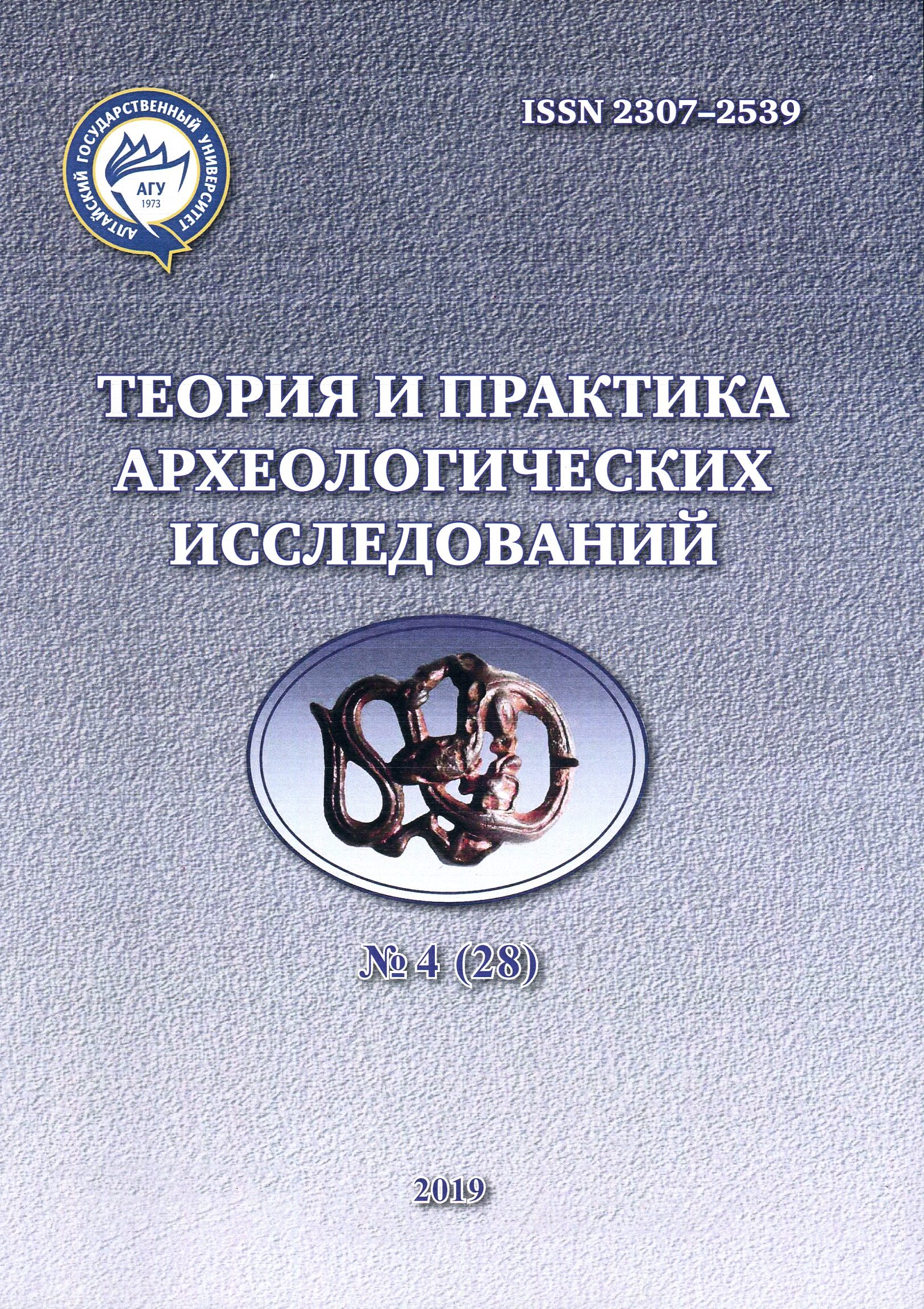THE EXPERIENCE OF THE INTERDISCIPLINARY FIELD SCHOOL TO STUDY THE SITES OF THE STONE AGE
DOI:
https://doi.org/10.14258/tpai(2019)4(28).-15Keywords:
Kyrgyzstan, Stone Age, interdisciplinary approach, field school, internationalityAbstract
In the field season of 2019 in the territory of southern Kyrgyzstan, an interdisciplinary field school for the study of the Stone Age site was organized on the basis of the international Central Asian Paleolithic detachment, supported by the Scientific and Educational Center “New Archaeology” (Humanitarian Institute, Novosibirsk State University). The work of the school took place in the framework of three main blocks – lectures, excavation practice and excursions. During the implementation of the program, students attended lectures on Archaeology, Anthropology, Geology and Archaezoology. They also took a direct part in the archaeological excavations of five Stone Age sites that date between 120-6 kaBP. In addition, students completed individual training with the international experts present which is relevant to their specialization. Thus, within the framework of this field school, it was possible to test a new training format, which is aimed at training specialists of a narrow profile.
In general, the implementation of educational programs in this format helps to increase the profile educational level of students, undergraduates and graduate students.
Downloads
References
Lbova L.V., Zotkina L.V., Bocharova E.N. Obrazovatel’nyj proekt “Sibirskaya arkheologicheskaya polevaya shkola – 2014” [Educational Project “Siberian Archaeological Field School – 2014”]. Vestn. Novosib. gos. un-ta. Seriya: Istoriya, filologiya. 2014. T. 13, vyp. 7: Arkheologiya i etnografiya [Bulletin of Novosibirsk State University. Series: History, Philology. 2014. Vol. 13, no. 7: Archaeology and Ethnography]. Pp. 9–16.
Ranov V.A., Nesmeyanov S.A. Paleolit i stratigrafiya antropogena Srednei Azii [Paleolithic and Anthropogenic Stratigraphy of Central Asia]. Dushanbe : Donish, 1973. 162 p.
Bramble D.M., Lieberman D.E. Endurance Running and the Evolution of Homo. Nature. 2004. Vol. 432. Pp. 345–352.
Brancaleoni G., Castellaro S., Perricone L. Nuovi studi sulle necropoli di Tarquinia (VT) con GPR e Geoelettrica. Unpublished master’s thesis, University of Bologna, Bologna, Italy. 2016.
Chargynov T., Ohnuma K. Formation of Nomadic Societies in Ancient Eurasia: Excavations at Kurama, Kyrgyzstan, 2014 // Ancient Orient Revealed through Excavations in 2014. In: Proceedings of the 22nd Annual Meeting of Excavations in West Asia. Tokyo, 2015. P. 66–71.
Delagnes A., Rendu W., Shifts in Neandertal Mobility, Technology and Subsistence Strategies in Western France // Journal of Archaeological Science. 2011. DOI:10.1016/j.jas.2011.04.007.
Farizy C., David F., Jaubert J. Hommes et Bisons du Paléolithique Moyen à Mauran. CNRS. 1994.
McPherron S.P., Alemseged Z., Marean C.W., Wynn J.G., Reed D., Geraads D., Bobe R., Béarat H.A. Evidence for Stone-tool-assisted Consumption of Animal Tissues before 3.39 Million Years Ago at Dikika, Ethiopia. Nature. 2010. Vol. 466. Pp. 857–860.
Shnaider S.V., Kolobova K.A., Filimonova T.G., Taylor W., Krivoshapkin A.I. New Insights into the Epipaleolithic of Western Central Asia: The Tutkaulian Complex. Quaternary International. 2018. URL: https://doi.org/10.1016/j.quaint.2018.10.001.
Thompson V.F., Marshall D.L., Reale J.K., Dahm C.N. The Effects of a Catastrophic Forest Fire on the Biomass of Submerged Stream Macrophytes. Aquatic Botany. 2019. №152. Pp. 36–42.


